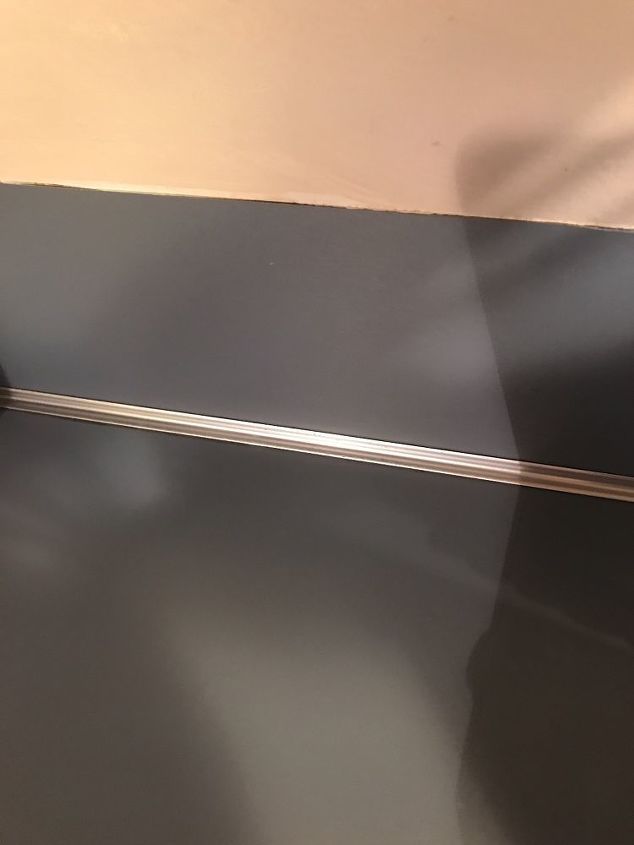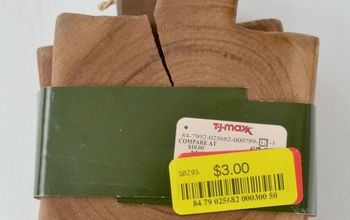How do I remove a screw that has a stripped head?
-
Somewhere I saw you a tip for this. Apparently you can place one of those large rubberbands over the stripped head of the screw (like the kind that comes around Broccoli or Asparagus). Then, you insert the screwdriver & carefully remove as you normally would. The rubber band serves to create a "grip" between the screw & the screwdriver. I haven't personally tried it, but makes sense that it would work!
 Jill B
on Oct 22, 2011
Helpful Reply
Jill B
on Oct 22, 2011
Helpful Reply -
-
You can also try putting a thin piece of cloth into the hole and screwing with the screwdriver... the cloth will "bunch" into the stripped area and force the screw to move.
 Ashley
on Oct 22, 2011
Helpful Reply
Ashley
on Oct 22, 2011
Helpful Reply -
-
You can also get one of these things if the rubber band and the cloth don't work - http://www.amazon.com/gp/product/B001A4CWHO Good luck, Stephanie.
 3po3
on Oct 22, 2011
Helpful Reply
3po3
on Oct 22, 2011
Helpful Reply -
-
I love the rubber band and cloth idea! I went to one of the big box stores and bought a bit that will remove the screw. Ask the people who work there and they will take you to the special "bit" that removes the stripped out screws.
 Jan Britt Interiors
on Oct 23, 2011
Helpful Reply
Jan Britt Interiors
on Oct 23, 2011
Helpful Reply -
-
Stephanie, Good inputs thus far. I simply want to explain the concept behind a standard screw extractor so you can understand how it works. The screw extractor set will come with 2 or 3 or more extractors, all different sizes. The directions will describe first drilling a hole into the top of the screw. The size of the hole will be determined by the extractor that you are using, which is determined by the size of the screw you are extracting. The threads on the extractor itself are opposite the threads on a normal screw. Once you have the hole drilled, you will insert the extractor in the head of the hole and turn the extractor counter-clockwise. This allows the extractor to "cut" new threads in the hole you just drilled and "screw" itself into the hole. Once the extractor hits the bottom of the hole, it has no where else to go... so at that point, as you continue turning the extractor counter-clockwise, something else has to give. With a bit of luck, your screw will "let go" and begin to turn, extracting itself from the material. Tim
 Hewitt Remodeling Services LLC
on Oct 23, 2011
Helpful Reply
Hewitt Remodeling Services LLC
on Oct 23, 2011
Helpful Reply -
-
The rubber band worked! (Thanks Jill B!). And I've got the Alden Pro Grabit on my holiday wish list. (Thanks, Steve G!). Tim, thanks for simplifying screw extractors. I'm ready for the next screw challenge.
 STEPHANIE
on Oct 25, 2011
Helpful Reply
STEPHANIE
on Oct 25, 2011
Helpful Reply -
-
I'm so glad it worked for you!! I think I'll start a collection of those rubber bands in my tool kit! ;-)
 Jill B
on Oct 26, 2011
Helpful Reply
Jill B
on Oct 26, 2011
Helpful Reply -
-
Thanks for that rubber band tip. It's a new one on me and is certain to come in handy.
 Joe Washington
on Oct 26, 2011
Helpful Reply
Joe Washington
on Oct 26, 2011
Helpful Reply -
Related Discussions
Command strips: why do they pull the paint off when I remove them?
Best wall primer to make paint last!Avoid peeling wall paint with this acrylic wall primer that Amazon reviewers swear by!
How do you remove the non-slip strips off the shower floor
How do I remove a stripped screw out of bottom plate of my vacuum?
I need to replace the belt but when I started taking out all the screws there is one that WILL NOT come out. Do you think if I break the plate that I can get a new on... See more
How do I remove a shower handle where the set screw is stripped?
Tried drilling it out, that didn’t work. What should I try now to remove the stripped screw?
How do I remove the metal strip between my countertop and backsplash?
I would like to remove the metal strip and laminate backsplash and replace with tile. Does anyone know what I would need to do to remove that metal piece? Will it pop... See more
How do I remove & hide the strips and gaps on modular wall panels?
I've read some people's fixes, but then it seems it is followed by a person saying that didn't work for them! What is the answer? I HATE ALL THE RANDOM STRIPS ON MY W... See more
I have a quartz countertop that has a rust stain, how do I remove ?
I tried cleaner from the hardware store but it hasn't removed a rust stain on quartz. The quartz is white. Does anyone have advice on how to clean quartz countertops ... See more

